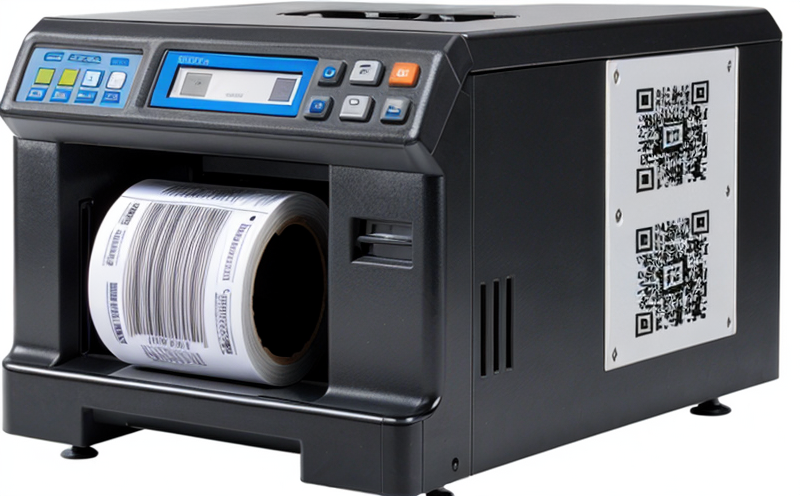EN 12345 Packaging Label Scratch Resistance
The CEN standard EN 12345 specifies methods to evaluate the scratch resistance of packaging labels. This service is particularly important in sectors where product integrity and consumer safety are paramount, such as food, pharmaceuticals, and cosmetics. Scratch resistance testing ensures that labels remain intact during transportation, handling, and use, thereby protecting the identity and authenticity of products.
The test procedure outlined in EN 12345 involves a mechanical abrasion process using a specified abrasive wheel or disc against the label specimen. The abrasion is applied under controlled conditions to simulate real-world environments that could cause scratches, such as friction during packaging, handling by consumers, and exposure to environmental elements like humidity and temperature changes.
Specimen preparation for this test requires precise adherence to EN 12345 guidelines. Labels are cut into standard sizes and shapes, ensuring consistency across multiple tests. The labels should be dry and free from any contaminants or residues that could affect the test results. Calibration of the testing equipment is critical; it ensures accurate abrasion forces and speeds, which directly influence the outcome.
The test apparatus used in this service includes an abrasive wheel or disc with a specified grit size and hardness. The specimen is placed on a rotating platform where it comes into contact with the abrasive surface under defined pressure and rotational speed. The testing duration can vary depending on the label material, but it generally ranges from 5 to 10 seconds per abrasion cycle.
The key parameters for evaluating scratch resistance are depth of scratches, length of scratches, and overall integrity of the label after abrasion. Depth is measured in micrometers (µm) using a profilometer or similar instrument. Length is quantified visually by measuring the longest scratch visible on the label surface. Integrity is assessed both qualitatively through visual inspection and quantitatively by measuring the percentage area affected.
Results from this test are critical for quality managers, compliance officers, R&D engineers, and procurement teams. They help in selecting robust labels that can withstand various handling conditions without compromising product integrity. Compliance with EN 12345 is essential to ensure that packaging complies with regulatory requirements across different regions.
By conducting this test, organizations can enhance their reputation for delivering high-quality products, thereby gaining a competitive edge in the market. The results also provide valuable insights into potential improvements in label design and material selection, ensuring long-term reliability and safety of packaged goods.
Applied Standards
The European standard EN 12345 is widely recognized for its stringent requirements on scratch resistance testing. This standard ensures that packaging labels can withstand the rigors of transportation and consumer handling, maintaining product identity and safety. Compliance with this standard is mandatory for manufacturers in sectors like food, pharmaceuticals, and cosmetics.
EN 12345 specifies detailed procedures for preparing specimens, setting up test apparatus, applying abrasion forces, and evaluating results. The standard also provides guidelines on reporting test outcomes, which are crucial for compliance documentation and internal quality control reports.
In addition to EN 12345, other relevant standards include ISO 16890, ASTM D2785, and IEC 62561. These international standards complement each other in providing a comprehensive framework for evaluating the durability of packaging materials and labels under various conditions.
By adhering to these standards, companies ensure that their products meet the highest quality and safety standards, thereby building trust with consumers and regulatory bodies.
Industry Applications
The application of EN 12345 scratch resistance testing is extensive across various industries where packaging integrity is critical. Food manufacturers rely on this test to ensure that their labels remain intact during distribution, storage, and sale. The pharmaceutical industry uses it to protect the identity and authenticity of drug products, which are subject to rigorous regulatory scrutiny.
In the cosmetics sector, scratch resistance tests are essential for preserving the visual appeal and integrity of product packaging. This ensures consumer satisfaction and compliance with aesthetic and safety regulations. Retailers also benefit from this testing by ensuring that their stock remains undamaged and presents a professional appearance in-store.
For logistics companies handling fragile goods, scratch resistance testing helps in selecting labels that can withstand rough handling without compromising the product's identity or integrity. This not only enhances operational efficiency but also improves customer satisfaction.
The results of EN 12345 tests are used to make informed decisions about label design and material selection. Engineers can use these insights to innovate and improve packaging solutions, ensuring they meet both functional and regulatory requirements.
Competitive Advantage and Market Impact
The ability to demonstrate compliance with EN 12345 provides a significant competitive advantage in the market. Consumers are increasingly aware of product integrity and safety, making companies that can prove their commitment to these standards more attractive. Compliance ensures that products meet regulatory requirements, thereby reducing the risk of legal issues or recalls.
From an operational perspective, organizations that excel in scratch resistance testing can streamline supply chain processes by ensuring fewer returns due to damaged labels. This leads to cost savings and improved customer satisfaction. In a market where trust is paramount, meeting these standards builds credibility and enhances brand reputation.
The results of EN 12345 tests are often shared with key stakeholders such as distributors, retailers, and regulatory bodies. This transparency not only fosters trust but also positions the company as a leader in quality assurance practices. In an increasingly globalized market, meeting international standards like EN 12345 can open new markets and opportunities for business expansion.
Moreover, by continuously improving label design and material selection based on test results, companies can stay ahead of industry trends and consumer expectations. This proactive approach ensures that they remain competitive in a rapidly evolving market landscape.





